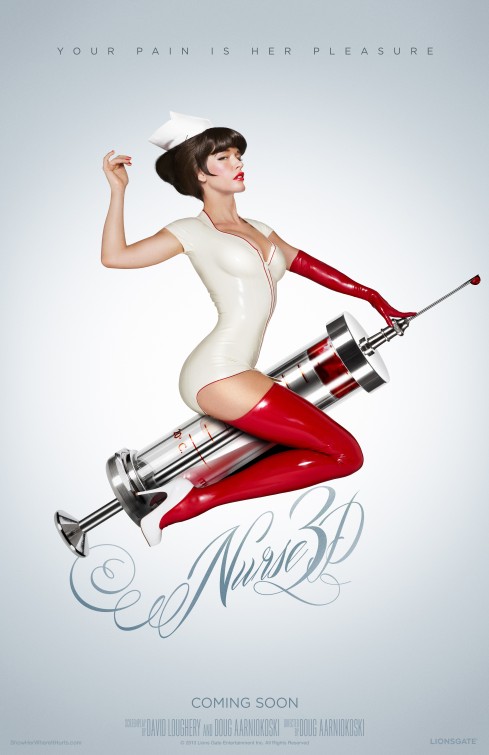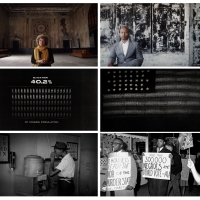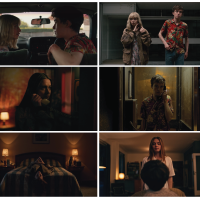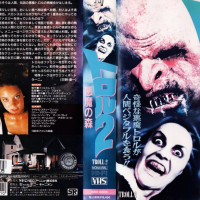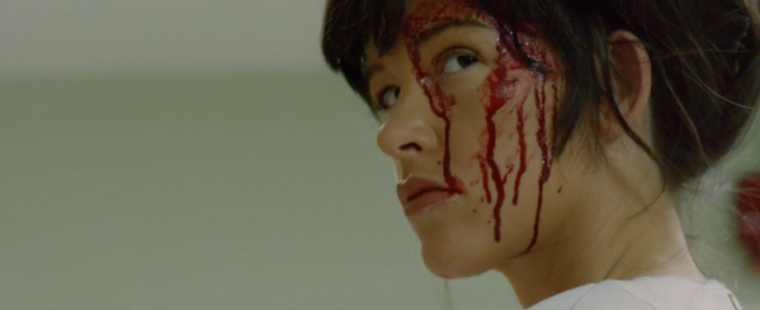
The inspiration for Nurse 3D harkens back to the golden age of exploitation movies, when carnival barkers like American International Pictures dreamed up provocative titles and lurid posters…and then penned scripts around them. The idea for Nurse 3D sprouted when Lionsgate sent women dressed as nurses out for a “blood drive” as part of a marketing campaign for the final Saw entry. The image of these candy stripers attired in antiquated, fetishized nurses garb was enough to convince the studio to develop a horror film around the premise of a homicidal healthcare professional.
The film’s teaser poster – featuring the titular deranged Florence Nightingale (played by Paz de la Huerta) completely naked except for a coat of fresh blood and a white nurse’s hat – left no doubt as to what kind of experience Nurse 3D would deliver. This was pure exploitation – boobs, blood and a bawdy good time.
The cinematographer charged with capturing those elements was Boris Mojsovski, CSC, who chatted with Deep Fried Movies about the making of Nurse 3D.
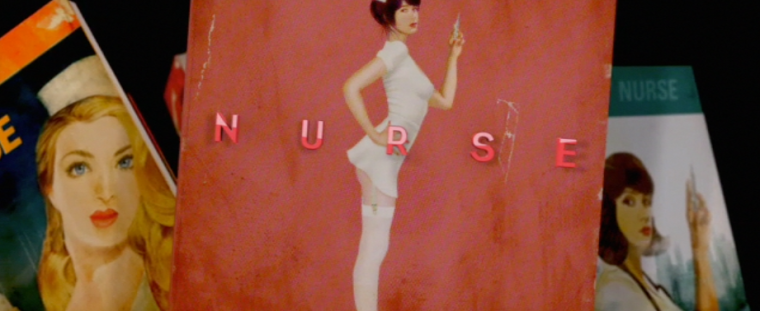
The Plot: A demented nurse (Paz de la Huerta) takes a Single White Female-esque shine to a new co-worker (Katrina Bowden of Tucker & Dale vs. Evil), while still making time to bump off any philandering men she comes across.
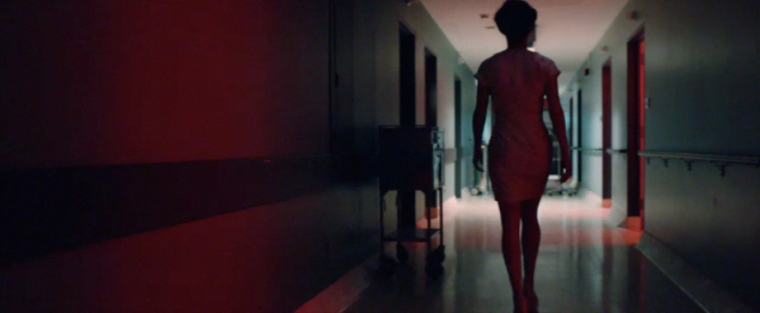
Can you tell me a little bit about your relationship with movies growing up?
My father is a cinematographer. I grew up on sets. I watched dailies, rough cuts and films he studied as references. I shot my first 16mm (film) when I was 5, but I never wanted to be a filmmaker, I guess because filmmaking was an everyday occurrence. I wanted to be an architect or a photographer. Photography seemed more immediate and a lot more accessible.
How did you get your start in the business and what was the very first job you remember having on set?
I never had a set job! I regret it. I regret never camera assisting, never pulling focus, never being a spark or a grip. I did come out to help my friend and gaffer Mick Reynolds once when he couldn’t find anyone else and he recommended I stick to what I know.
In the fourth year of my film production studies at York University in Toronto I made a short film called Stop. It traveled the festival circuit and did well. I soon got money for my first “professional” short called Symphony and then for my first feature, Three And a Half. It all happened kind of easily. I was just very lucky at the beginning of my filmmaking career. I kept writing and developing projects, but more and more people asked me to shoot their independent films. So I became a cinematographer who writes and sometimes directs – a weird job title that is with me to this day.
Who was the first cinematographer that had a conscious impact on you?
Other than my dad, Levko Mojsovski, the biggest influence was definitely Vittorio Storaro. I just loved his philosophy of color and his approach to lighting. His work is like magic. It carries a mystery within itself and it always triggers a strong emotional response, conscious or subconscious.
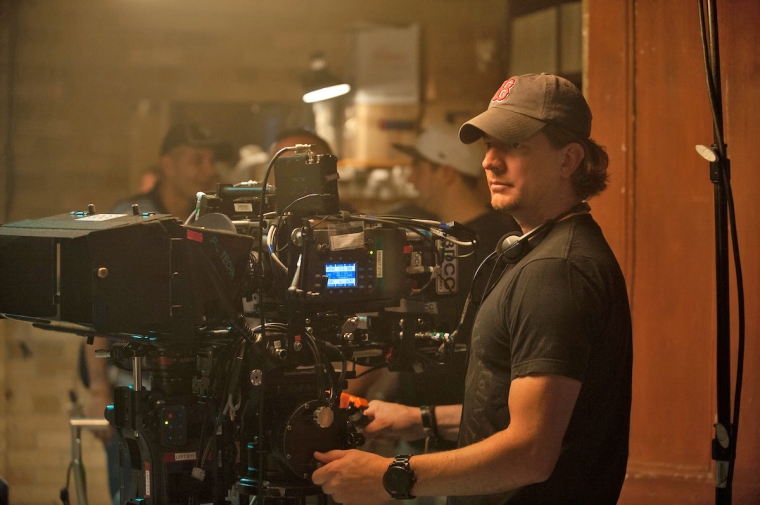
(Pictured Above) Nurse 3D director Doug Aarniokoski manning the film’s P+S Technik Freestyle 3D rig. Note the two Alexas – one atop the tripod, the other at a 90-degree angle in front of the tripod – required to create the 3D illusion.
What camera and lens package did you opt for on Nurse 3D?
We shot with two sets of two Alexas, Real 3D with a Quasar and P+S Technik Freestyle rigs. We used Zeiss Ultra Primes (as our lenses).
At the time (ed. note – Nurse 3D was shot in the winter of 2011), shooting 3D was still quite a slow process. Since it was my first time shooting it, I went to several film sets to check out their 3D workflow. I really didn’t like the way things were set up. I was very fortunate to have Brent Robinson, the great stereographer, at my side. He demystified the 3D process for me and he allowed the director Doug Aarniokoski and I to be free with the camera and do things that were not “normal” (for 3D). So we used long lenses (I actually love the look of a long lens in 3D), we did quick wipes, even handheld action.
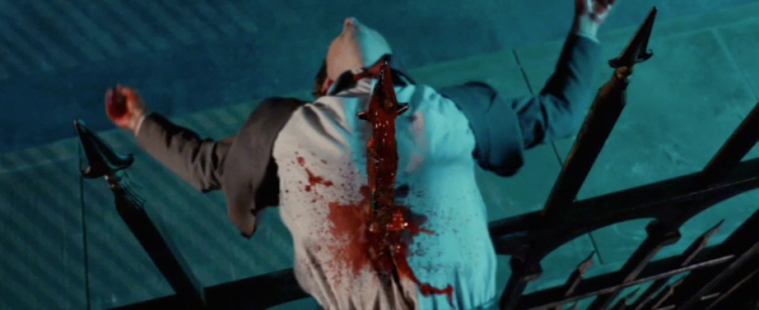
How did shooting in 3D change the way you work? Did it alter your choices of lenses and the way you lit?
As I mentioned, Brent freed us to do things the way we were used to doing them. We chose lenses depending on the situation in the scene, not based on what we were supposed to do for 3D. I kept saying to everyone that I’m not interested in making the 3D look good, I wanted the movie to look good. I relied heavily on Brent to make the 3D work to better the movie so it was never a nuisance, but rather a great tool. Here, I will say it – 3D is great and I love it when it’s done right. Unfortunately, a lot of it is done poorly. There are films like Hugo or Gravity that are far better in 3D and these films should be an example for all of us.
Lighting for 3D was like lighting when using an older, slower film stock. I needed to get used to that. My dad always makes fun of me since I light to T2 – he says a DP who can’t light to T5.6 is not a real DP. That’s what I had to do on Nurse. The mirror compensation was around a stop and a half plus I wanted to give at least a T2.8 to my exceptional focus pullers David T. Sheridan and Jim Teevan since any focus buzz kills the illusion of 3D.
On top of that, and I know many will call me a fool for saying this, I needed to compensate for the 3D projection screens and the dreaded glasses. With all of that put together, I was compensating around 2 1/2 stops. My Alexas were now (rated) at 160 ISO! On top of that, I devised some very crushed looks into LUTs so my latitude was less than eight stops. Doug really wanted a “Tony Scott look” so we went for high contrast and bold colors – unfortunately, the studio released the film without this look. The version I approved never made it to the theaters or video, to my surprise and disappointment. All that difficulty and a month of playing with looks for nothing.
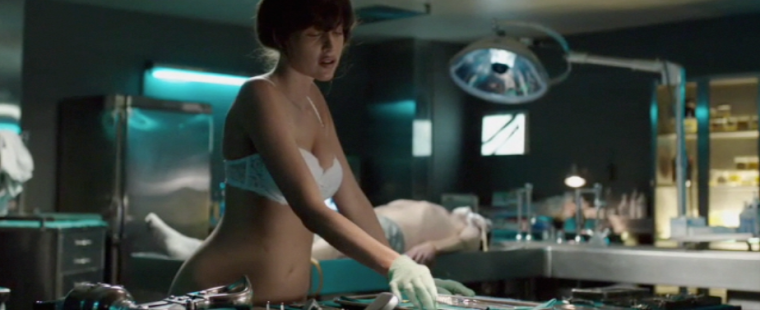
The tone of Nurse is that of an over-the-top romp. What were some techniques you used to visually match that tone?
We made sure that the camera was always positioned very low and that we moved with the characters. Doug likes push-ins, even on a longer lens – that was very tough on our (A-cam) focus puller Dave Sheridan, but it adds suspense and looks cool.
The lighting is always super soft, with large sources close to the actors, but we wanted a noir atmosphere and contrast. In the hospital, our designer Alicia Keywan built me these fluorescent “boxes” which directed the light down in the hallways and didn’t let any light hit the walls. The walls were all painted dark green and dark turquoise to help with the “cross-processed” look and our color scheme. I have a distaste for white or bright walls so we made sure that was avoided at all cost. This film always wanted to look like a thriller, dark and mysterious.
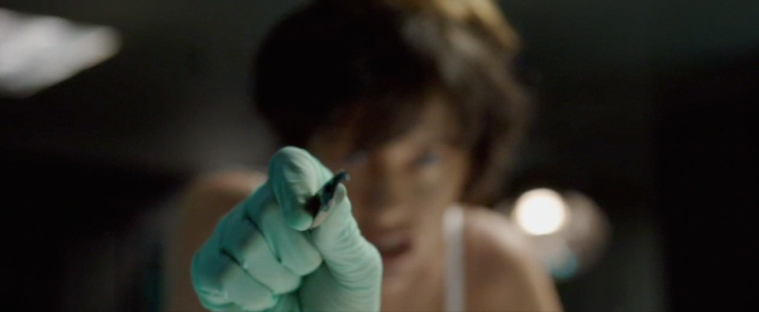
You shot Nurse back in the winter of 2011. How close is the final release version to the early edits.
As I mentioned before, my look was abandoned by the studio for reasons unknown to me. The film now looks “normal” and I had nothing to do with it – I didn’t do that grade. They sent me the “final” DCP for approval, but then changed the look I approved. Not sure why this happened. It certainly never happened to me before.
The early cuts and the final cut are actually not that different. The voiceover was added and a few scenes shuffled, but the structure of the scenes is very much the same.
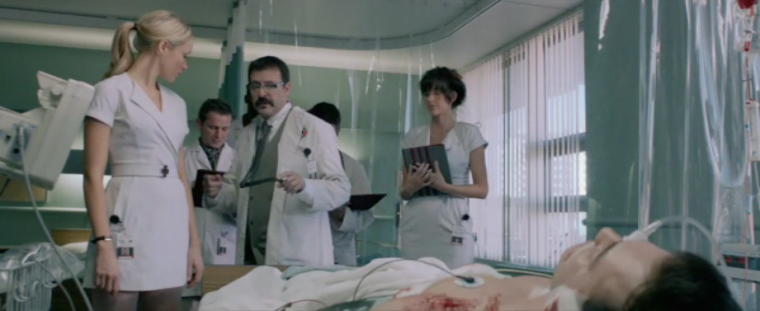
Can you tell me a bit about the hospital location?
We used four different locations for our hospital. The main lobby and the grand staircase was at the Old City Hall in Toronto and we had three former hospitals as sets as well. They were architecturally different. We wanted to suggest that different wings and buildings in this hospital look and feel different. This helped our final chase (scene), but it was a difficult lighting job since I had to track looks and environments that were many weeks apart.
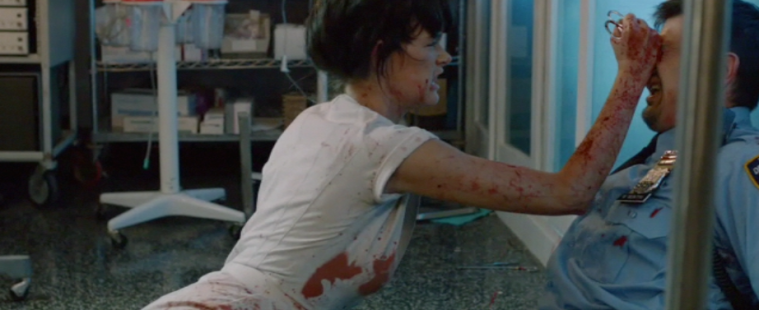
Boris walks us through a few shots from Nurse 3D.
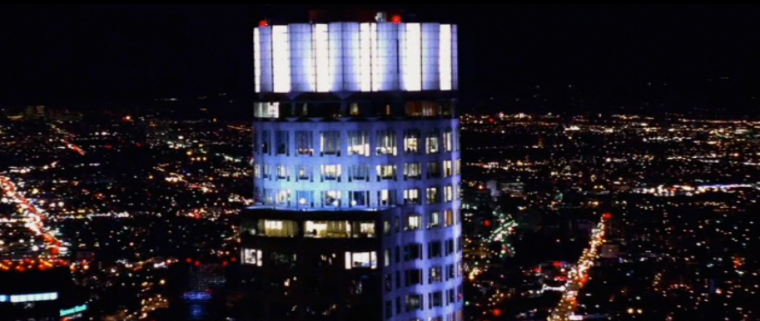
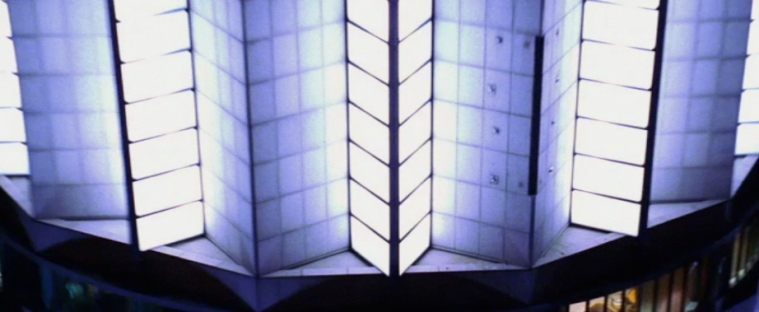
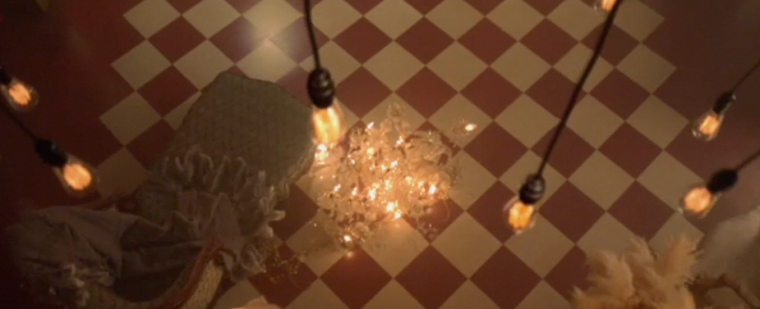
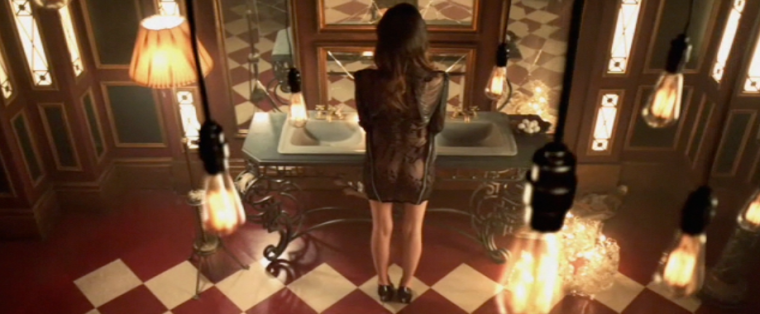
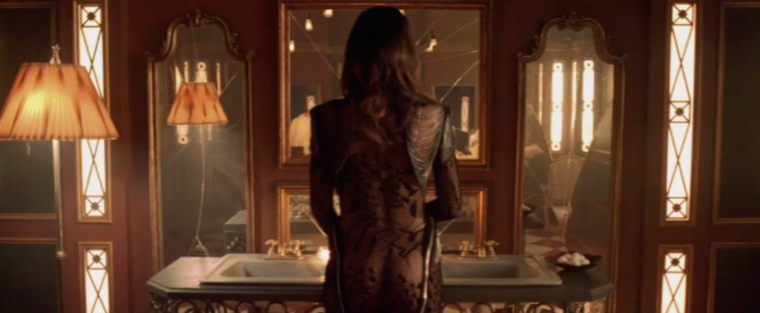
The Shot: Nurse 3D opens with a helicopter shot that – with the help of digital stitching – pushes inside a night club bathroom and booms down from the ceiling to reveal Paz de la Huerta’s nurse Abby in front of a bank of mirrors.
This was the most complex shot of the film. It involved a double set of mirrors, moving walls and a crane to come from the outside in. Jon Campfens, our VFX Supervisor, and his team from Switch VFX worked closely with Doug and I to accomplish this shot. We wanted Paz to have an infinite reflection in the mirror as she puts her make-up on. We wanted the camera to come through the roof of a Manhattan skyscraper and over the wall to reveal her for the first time. So the art department built the mirrors on both sides. Everything was on sliders so the crane arm could descend from the studio ceiling down into Paz’s (close-up). We had to clean up the infinite reflection of our camera, the sliding walls, the crane etc. but still have elements to composite the shot. So we shot with multiple cameras to have the angels, but it had to be done at the same time so the VFX team could track it. On top of that, I wanted these great practical bulbs to pass by the camera so we had to devise a system of pulleys to lift them as they were about to hit the lens. Our operator Joe Turner had to be so perfectly precise on the wheels. He was sweating bullets.

The Shot: A love scene between Bowden’s character and her paramedic boyfriend, bathed in blues and reds.
Cyan and red was the color scheme for the hospital and I wanted to foreshadow the future developments by using the pulsing red light of the emergency system in the hospital. The scene is dark, the light is crossed – dark side to camera, consistent with every other scene in the movie. I used (Rosco’s) Storaro 2001 Red and Cyan 60 and 90 (gels).
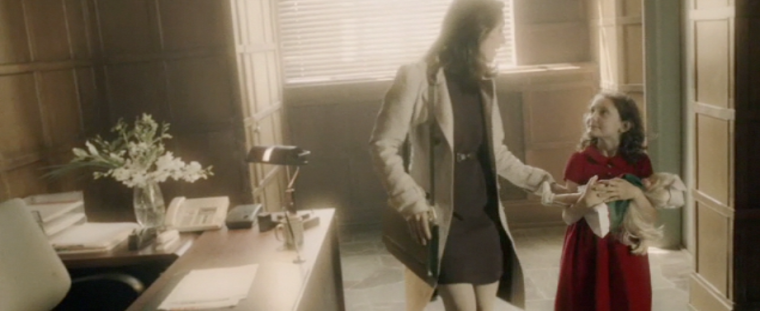
The Shot: An image from one of Abby’s flashbacks to her childhood.
This entire sequence was shot for black and white! There was some resistance to that eventually and we changed it to (our Tony Scott-inspired look) – desaturated and low contrast. The look (used in the released version of the film) was created later.
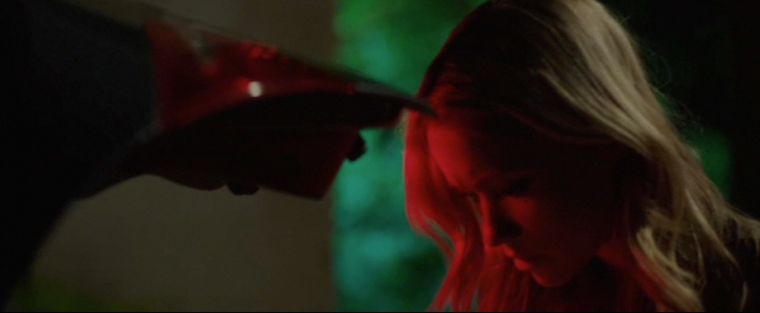
The Shot: A close-up of Bowden’s character finding an unwanted surprise in the trunk of her car.
The same color scheme from the hospital is carried into the final chase – the light is progressively more red, only the background is cyan. It was fun to use these colors. I’m usually a fan of a more subtle, muted palette, but every film should have its own look and I loved doing this. It was liberating.
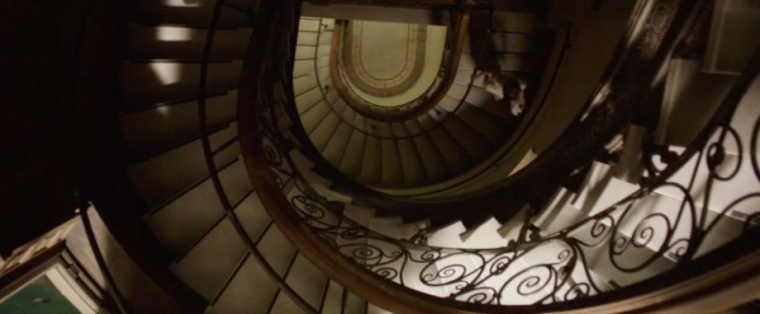
The Shot: A tracking shot that descends down the center of a spiral staircase
This was the second most difficult shot of the movie. The location was the old city hall, which is wonderful and full of character. We wanted the camera to follow our characters down the spiral staircase and we needed a descending rig to accomplish this. The difficulty was that the “elevator” motor we needed could not fit in the narrow hallway on top of the staircase so the key grip Bob Deprato and his team had to build a monstrosity of a rig that was outside in the parking lot, connected by a system of wires to the top of the building and then down through the historic windows on top of the stairs. To make it more complicated, the 3D rig weighs about 80 pounds and it needed a special head that could take the weight and not sway as it descended down the stairs. It took some time but the result is wonderful.
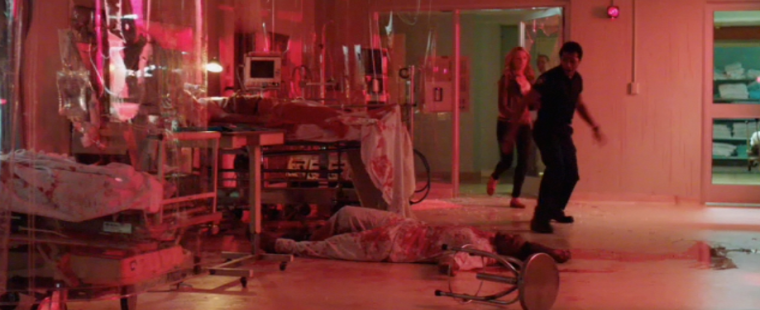
The Shot: A wide view of the red-drenched climactic showdown at the hospital.
At this point in the story, all hell breaks loose and everybody is after (de la Huerta’s character) Abby. Alarms are going off everywhere in the hospital and the entire world is red. Red lights and red blood, just a trace of other light (gelled with Cyan 30) in every shot for focus and reference. Our gaffer Sean Osadzuk had his work cut out for him and his team – the entire hospital was pulsing in red and I didn’t want the pulsing to be in sync! I also wanted the red light to be soft and wrap around the actors’ faces. There were so many units on the floor. We definitely emptied the truck that week.
Nurse 3D is now out on DVD, Blu-Ray and VOD.
